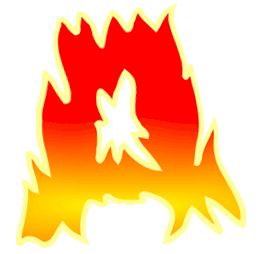-
Pressure: It is the force per unit area.
P = F / A
-
Unit: Pa
-
Examples
-
Swords exert high pressure because they concentrate the force on a small area.
-
Skis exert low pressure on the snow because the weight is spread over a large area.
-
-
Pressure of liquids
-
Pressure of a liquid is due to weight of the liquid.
P = h ρ g
When something is immersed in a liquid, the liquid pushes it up. This upthrust is because the pressure near the top of the object is less and the pressure near the bottom of the object is more.
-
-
Hydraulic systems: In such systems, pressure is transmitted between pistons using liquids because liquids are incompressible.
Py = Px
Fy / Ay = Fx / Ax
Fy = Fx ( Ay / Ax )
This means that force Fx will result in a bigger force Fy if Ay > Ax.
-
Pressure of gases
-
Pressure of gases is due to molecular collisions.
-
Pressure of a gas can be changed by
-
changing temperature
-
changing mass
-
changing volume
-
-
Atmospheric pressure
-
At sea level it is:
1 atmosphere = 1.0 x 105 Pa = 76cm of Hg = 760mm of Hg
-
On a mountain top it is less.
-
In a deep mine it is more.
-
-
-
Simple Mercury Barometer: A simple mercury (Hg) barometer can be used to measure atmospheric pressure.
-
Working: Pressure of atmosphere is equal to the pressure of (additional height of) liquid.
-
-
Manometer: A manometer can be connected to a gas container to measure the pressure of the gas inside the container.
-
Working:
-
PG = PL + P0
OR
-
PG + PL = P0
-
-
-
Boyle’s Law: P1 V1 = P2 V2
-
This formula assumes that temperature or mass does not change.
-
-
Total pressure beneath the surface of a liquid is the sum of atmospheric pressure and the liquid’s pressure.
-
When a molecule hits a surface it exerts a force.
-
When many molecules hit a wall at the same time, their collective force per unit area is pressure ( P = F / A ).
-
Pressure depends on frequency of collisions.
-
Frequency of collisions is affected by change in mass, volume or temperature:
-
When mass increases, the average separation between molecules decreases. So more frequent collisions.
-
When volume decreases, the average separation between molecules decreases. So more frequent collisions.
-
When temperature increases, the speed of molecules increases. So more frequent and more forceful collisions.
-
-
Go back to table of contents



